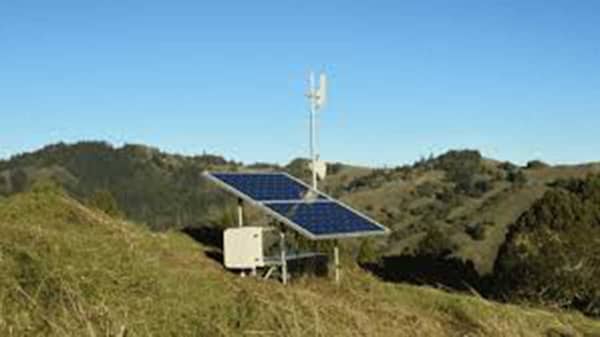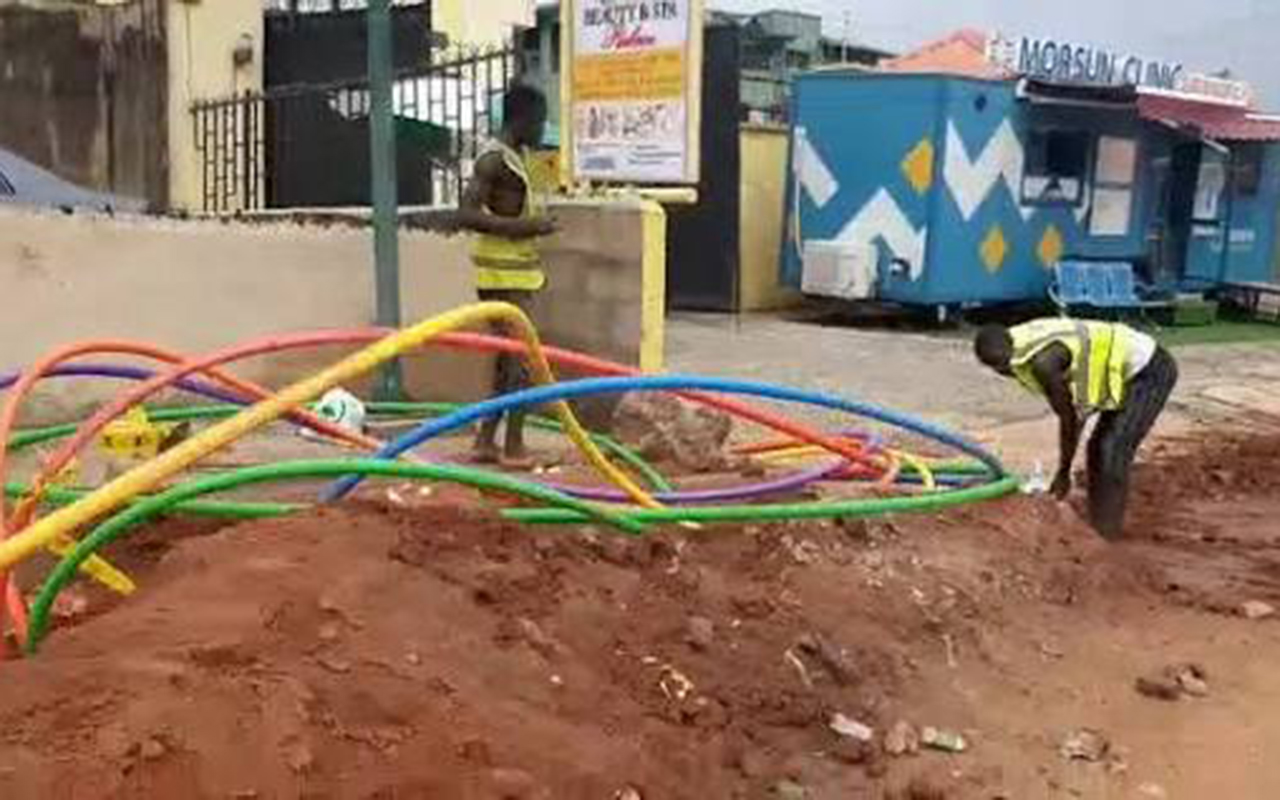The telecoms sector has undoubtedly become a special vehicle for social and economic empowerment, social integration, and community development. But despite huge investments in expanding the services, many Nigerians are still without basic telephony services, ADEYEMI ADEPETUN writes.
Today, communication is the most valuable tool in the world. Thanks to digital and technological trends, information can travel thousands of miles per millisecond, benefiting individuals, businesses, and world economies through real-time connections and turning the world into a global village.
But as valuable a tool as this is, there are still several million people across emerging markets and Africa who have little or no access to digitised communication for personal, business or socio-economic purposes.
These are mostly rural and ultra-rural communities where access to digital technology is next to impossible due to the cost-benefit disparities in the regions. The cost of setting up telecommunication and Internet infrastructure in these areas is higher than the setup cost in the urban centres, which had been the focus of Mobile Network Operators for obvious reasons.
According to GSMA, about 750 million people worldwide do not have access to mobile network coverage. The International Telecommunications Union said 2.6 billion people are still offline globally, including in Nigeria.
Arguably, Nigeria has made significant strides in expanding its telecoms connectivity over the past decade. It has closed its connectivity gap by 57.97 per cent between 2013 and 2024; the number of unconnected clusters and areas with little to no network services fell from 207 to 87, benefiting 13.8 million people.
The Universal Service Provision Fund (USPF) revealed that in 2013, the number of people living in unserved and underserved areas amounted to 36.8 million and has fallen to 23 million.
These 23 million unserved/underserved people are housed in over 3000 communities, predominantly in rural areas, still lacking basic mobile connectivity.
Bridging this digital divide is crucial for fostering innovation, entrepreneurship, digital inclusion, and the overall growth of Nigeria’s digital economy.
Nigeria leads in regional access gap
OF COURSE, unserved and underserved communities are not peculiar to Nigeria alone. Despite the huge investments deployed in Africa, only 38 per cent of the population was online in 2024.
The ITU, which disclosed this, noted that with 38 per cent, Africa ranked lowest in terms of Internet usage last year, compared to a global average of 68 per cent.
The ITU disclosed this in the latest State of Digital Development in Africa report, which painted a sobering picture of the continent’s digital divide, despite a growing appetite for Internet connectivity across Africa.
Invariably, it means 62 per cent of Africa’s 1.54 billion population currently have no access to the Internet.
According to the Nigerian Communications Commission (NCC), Nigeria, which has one of the largest mobile connectivity in the continent, recorded 138.7 million mobile connections as of December 2024.
Broadband penetration in the country stood at 44.43 per cent in the same period, while 42 per cent of the country’s connectivity was still on 2G, with 5G connections accounting for only 2.4 per cent.
High connectivity costs
ITU noted that although Internet adoption in Africa has been rising, millions remain offline due to high service costs, digital illiteracy, and a lack of reliable infrastructure, especially in rural communities.
According to the report, affordability remains a major stumbling block to broader digital inclusion.
ITU noted: “In 2024, the median price of an entry-level mobile broadband plan (2GB per month) stood at 4.2 per cent of gross national income (GNI) per capita, down slightly from 4.6 per cent in 2023. That’s still more than double the UN Broadband Commission’s affordability target of two per cent, and the highest of any ITU region.
“The situation is even worse for fixed broadband, which carries a median price tag of 15 per cent of GNI per capita, placing it well beyond the reach of most African households.
“These high costs hit low-income groups the hardest, deepening digital inequality across the continent.”
ITU, which is the United Nations’ arm in charge of global communications, noted that mobile networks continue to be the backbone of Internet access in Africa.
It added that as of 2024, mobile broadband covered 86 per cent of the population, yet 14 per cent remain completely unserved — a figure that spikes to 25 per cent in rural areas.
Although 70 per cent of the population has access to 4G, the report noted that around 16 per cent still rely on 3G networks, which offer slower speeds and limited digital experiences.
Meanwhile, 5G coverage is still nascent, reaching just 11 per cent of the population, mostly in select urban hubs.
More challenges confront expansion
SEVERAL factors contribute to the persistent connectivity gap in Nigeria specifically. For instance, there are issues with inadequate infrastructure, limited digital literacy, economic factors, regulatory issues and device affordability.
Telecom expert, Kehinde Aluko, said rural areas often lack the necessary infrastructure, including fibre optic cables and base stations, to provide reliable network services and connect the unconnected. He said even where connectivity exists, a lack of digital literacy in some communities hinders effective usage and the realisation of its benefits.
Aluko submitted that the high cost of smartphones and data remains a significant barrier for many Nigerians, particularly those in low-income households.
According to him, currency devaluation and inflation have increased the cost of imported telecom equipment, impacting operators’ profitability and potentially leading to higher tariffs, further affecting affordability for consumers. He said multiple taxation, challenges in obtaining Right of Way (RoW) permits for infrastructure deployment, and infrastructure vandalism also impede the expansion of connectivity.
Dangers of non-inclusion
THE ITU observed keenly that Nigeria and other African digital revolutions are being led by young, urban populations, while older adults and rural dwellers are being left behind.
The urban-rural divide is especially stark with Internet usage in cities reaching 57 per cent in 2024, compared to just 23 per cent in rural areas – the widest gap among all ITU regions.
This divide is compounded by unequal infrastructure investment. While 4G and 5G rollouts prioritise urban areas, rural regions remain stuck with older and slower networks.
The ITU emphasised the need for targeted policies and infrastructure investment to close this digital gap.
On the policy front, the global telecoms body observed that many African nations have made strides in updating their ICT regulatory frameworks, moving toward more competitive and investment-friendly environments.
However, the ITU noted that only 18 per cent of African countries have reached the most advanced level of ICT regulation (G4), well below the global average of 38 per cent. ITU warned that digital transformation cannot succeed without robust digital governance.
The report called for improved coordination on digital identity, digital skills, and cross-sector policies, alongside stronger efforts in cybersecurity and data protection.
Can Nigeria’s initiatives bridge the gap?
THE Nigerian government is actively pursuing various initiatives to bridge the connectivity gap. These include Projects BRIDGE and 774, Universal Access Project, the National Broadband Alliance for Nigeria (NBAN), Construction of 7000 and 1000 telecom towers, strengthening subsea cable systems, Mobile Virtual Network Operators (MVNOs), among others.
For emphasis, Project BRIDGE aimed to expand Nigeria’s fibre optic network by 90,000 km to improve broadband penetration across the country. The project is expected to commence in the fourth quarter of 2025, supported by significant funding from the World Bank and the African Development Bank.
Project 774 focused on ensuring that every local government secretariat in Nigeria benefits from high-speed connectivity, aiming to enhance digital access at the grassroots level. The Guardian learnt that as of December 2024, some 48 LGAs have been connected.
FG’s universal access project is aimed at connecting over 20 million Nigerians who currently lack access to digital services. This project involves building 7,000 telecom towers in unserved and underserved areas. This will be implemented under a Public-Private Partnership (PPP) funding model.
The Secretary of USPF, Yomi Arowosafe, revealed plans to build an additional 1000 BTS in rural communities. He said USPF is expected to complete deployment by 2030 in collaboration with development partners.
To ensure that larger hinterland populations get connectivity, Arowosafe said USPF will explore available options of partnerships and collaborations with OEM manufacturers to support the usage of end-user devices in rural, unserved and underserved communities through affordable mobile devices.
Recognising the importance of resilient digital infrastructure, the government is also focused on strengthening subsea cable systems.
The FG has also licensed 46 Mobile Virtual Network Operators (MVNOs). Players like Vitel Wireless, Liv.ing, ENOSIM are expected to introduce innovative and affordable telecom services, increasing competition and potentially driving down costs for consumers. They are expected to provide services to the unserved and underserved communities in Nigeria.
Possible impact of improved connectivity
THERE is no gainsaying the fact that bridging the telecom connectivity gap in Nigeria holds immense potential for socio-economic development. These include economic growth, digital inclusion, improved access to services, job creation and empowerment.
Indeed, economically, enhanced connectivity facilitates e-commerce, digital financial services and supports businesses, contributing to overall economic growth and diversification. ICT already contributes significantly to Nigeria’s GDP.
In terms of inclusion, this ensures that more Nigerians, regardless of their location, can access information, education, and online services, reducing social and economic disparities. Better connectivity enables access to vital services such as telemedicine, e-learning, and mobile-based agricultural extension services, improving the quality of life for citizens.
Analysts believe strongly that the expansion of the telecoms sector and the growth of the digital economy create new job opportunities.
In one of his interviews, the Chairman of the Association of Licensed Telecom Operators of Nigeria (ALTON), Gbenga Adebayo, said the telecom sector created several direct jobs and more indirect jobs.
According to him, the number of persons directly employed by telecom operators is relatively high, but the number of people that are indirectly employed by the telecom sector is huge.
“We have about 15,000 direct employees across all telecoms networks, with over 500,000 indirectly employed through the kind of telecoms support services that they offer to Nigerians, and these indirect employees are within the categories of contractors, suppliers, vendors, and other telecoms support service providers like Value Added Service (VAS) providers,” Adebayo said.
Largely, bridging the telecoms connectivity gap in Nigeria is a multifaceted challenge that requires sustained efforts and collaboration between the government, private sector, and communities. The ongoing initiatives and the embrace of innovative solutions offer a promising path towards a more connected and digitally empowered Nigeria, unlocking significant socio-economic benefits for all its citizens.






